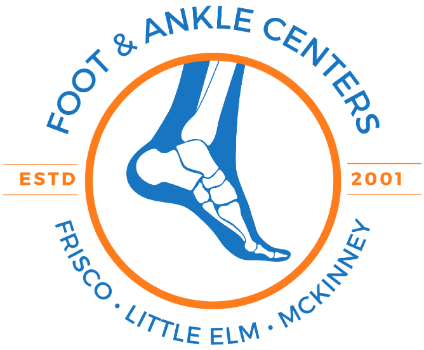Lumps & Bumps
At Foot & Ankle Centers of Frisco, Little Elm, & McKinney, our podiatrists have seen many patients who are concerned about various lumps and bumps that appear on their feet. While some of these lumps and bumps may be harmless, others could be indicative of a more serious issue. We believe it is important to be aware of the different types of lumps and bumps that can occur on your feet, so you can take proper action if they appear.
Common Types of Lumps and Bumps Found on Feet
Plantar Warts
The most common type of lump or bump that can develop on the feet is a plantar wart. These warts are caused by a virus and appear as small, hard bumps that are usually flesh-colored or gray. They can range in size from a few millimeters to several centimeters in diameter. While they are generally painless, they can become uncomfortable if they are located on a pressure point. At Foot & Ankle Centers of Frisco, Little Elm, & McKinney, our podiatrists can safely remove your wart and provide recommendations on how to prevent future warts. For more information on this condition, our podiatrists have a page about treating plantar warts.
Corns & Calluses
Corns and calluses are thick, hard patches of skin that form in response to pressure and friction. They often appear on the toes, the sides of the feet, and the heels. They are usually painless, but can become painful if they become irritated or inflamed. The best way to treat corns and calluses is to reduce the pressure and friction by using padding or other protective measures.
If left untreated,corns and calluses can become infected and can cause more serious complications. Corns and calluses can also increase the risk of cuts, infections, and blisters on the foot. At Foot & Ankle Centers of Frisco, Little Elm, & McKinney, our podiatrists can carefully shave the corn or callus using a scalpel. Your podiatrist can then provide you with the correct orthotics and recommend ways to care for your feet. This is especially important for patients who have diabetes or poor circulation, since these conditions reduce your ability to fight off infections and make it more difficult for your body to heal wounds.
Cysts
Mucous cysts are small, fluid-filled sacs that can form on the skin of the feet. They usually develop on the top or side of the toes, and are often the result of trauma or a previous injury. Mucous cysts are usually painless, but can become irritated or painful if they are exposed to pressure. They can also become red, swollen, and tender if they become infected. Treatment for mucous cysts may involve draining the cyst or surgically removing it, depending on the size and severity.
Ganglion or synovial cysts are fluid-filled sacs that develop on or near joints, often on the feet or ankles. They can range in size from a few millimeters to several centimeters in diameter. While the exact cause of ganglion cysts is unknown, they are thought to be caused by trauma or repetitive motion. These cysts are usually painless but can become tender to the touch or cause pain when walking. Treatment for ganglion cysts may involve draining the cyst or surgically removing it, depending on the size and severity.
Benign Tumors
Plantar fibromas are benign tumors that develop in the arch or bottom of the foot, usually near the heel. They tend to be painless but can become tender to the touch or cause pain when walking. Plantar fibromas are often caused by repetitive motion, but can also be related to other conditions such as genetic disorders or hormonal imbalances. Treatment for plantar fibromas may involve draining the cyst or surgically removing it, depending on the size and severity.
Lipomas are non-cancerous growths that consist of fatty tissue. They can develop anywhere on the body, including any part of the foot. Lipomas are usually painless, but can become tender or painful if they are located near a pressure point. Treatment for lipomas usually involves removing the growth surgically.
Rheumatoid Nodules
Rheumatoid nodules are small lumps that can form underneath the skin due to an autoimmune disorder called rheumatoid arthritis. These nodules are usually round or oval in shape and range in size from a few millimeters to several centimeters. They are most commonly found in areas of the feet that are constantly exposed to pressure and friction. These areas include the balls of the feet, the heels, the sides of the feet, the toes and the arch of the foot. They can also form in the ankle and heel joints.
Rheumatoid nodules can be painful and may cause swelling, redness, and decreased range of motion in the affected area. Treatment for rheumatoid nodules may include medications, physical therapy, and in some cases, surgery.
How are Lumps and Bumps On The Foot Diagnosed?
Foot & Ankle Centers of Frisco, Little Elm, & McKinney, our podiatrists begin diagnosing your mystery lump or bump by performing a physical examination, asking about your medical history, and in some cases, imaging tests such as X-rays, MRI, or CT scans may be required. During the physical examination, your podiatrist will look for signs of infection, inflammation, or injury. Imaging tests can be used to help determine the cause of the lump or bump, especially if the condition is a cyst or tumor.

